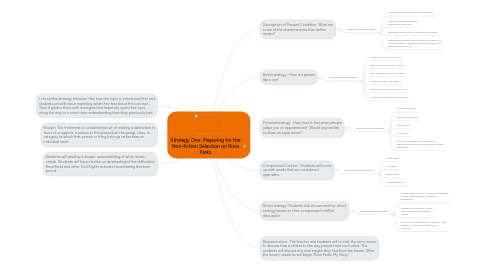
1. Description of Present Condition: What are some of the characteristics that define racism?
1.1. Possible student answers
1.1.1. Not liking someone because of their race
1.1.2. Treating people differently because of their race
1.1.3. Thinking a certain race is better than another
1.1.4. Making assumptions about races as a whole. All Asians are smart, all black people are athletic, all Hispanics are lazy, etc.
2. Direct analogy: How is a person like a car?
2.1. Possible student answers
2.1.1. Some are old, some are new
2.1.2. They come in different colors
2.1.3. They have different body styles
2.1.4. Some are faster than others
2.1.5. Some are cheap, some cost a lot
2.1.6. Some break down and some don't
3. Personal analogy: How does it feel when people judge you on appearances? Would anyone like to share an experience?
3.1. Possible student answers
3.1.1. It makes me mad
3.1.2. It hurts my feelings
3.1.3. I don't like it
3.1.4. It's not fair
3.1.5. There will inevitably be examples of experience especially from the junior high age group
4. Compressed Conflict: Students will come up with words that are considered opposites.
4.1. Possible student answers
4.1.1. pretty ugly
4.1.2. old news
4.1.3. awful good
4.1.4. same difference
5. Direct analogy: Students will choose another direct analogy based on their compressed conflict discussion.
5.1. Possible student answers
5.1.1. People are like flowers. They can be pretty or ugly depending on a person's perception.
5.1.2. People are like habits. There are good habits and awful habits.
5.1.3. People are like vegetables. They can look different, but still have the same benefits.
